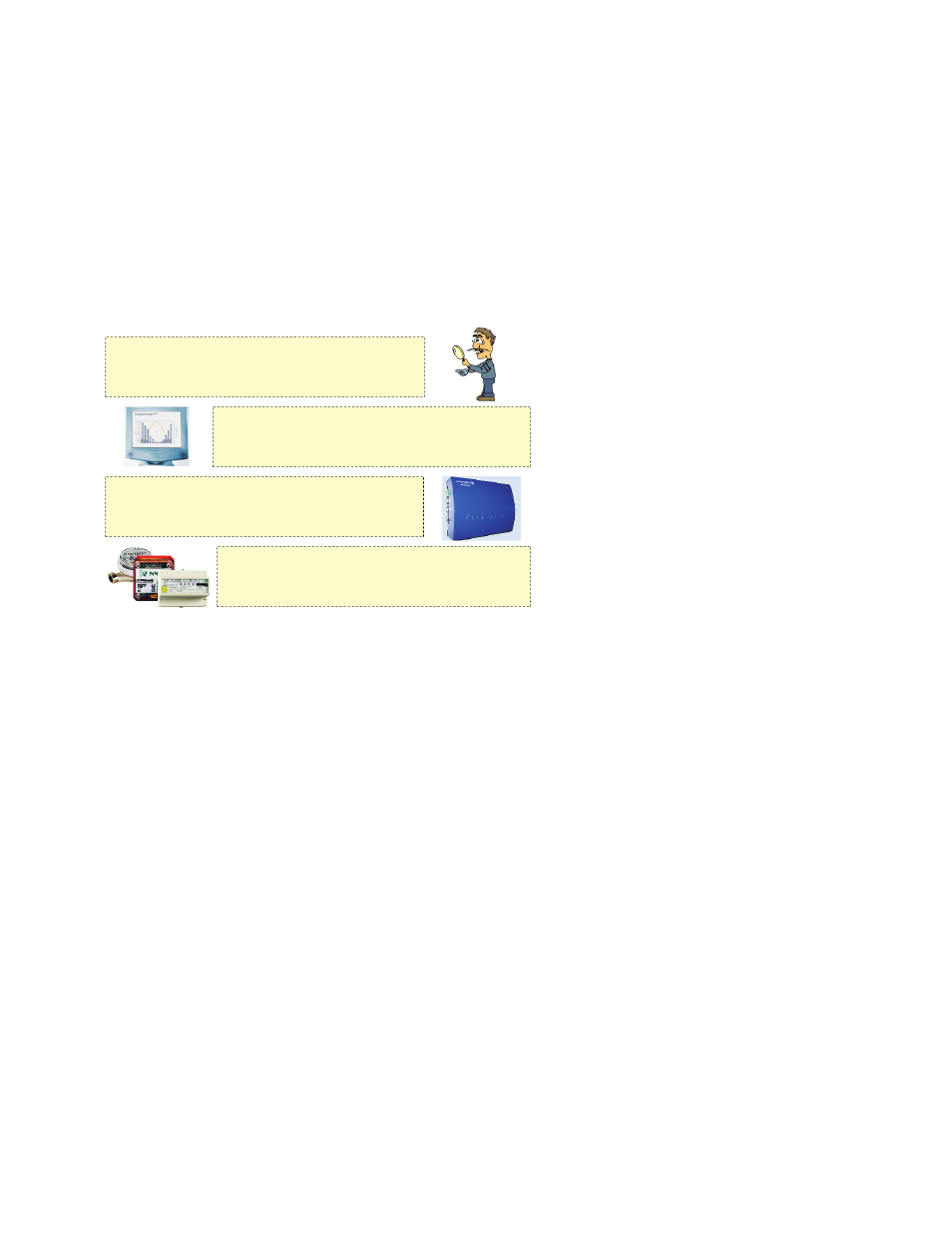Retrotec USACE User Manual
Page 83

Chapter 7 61
ing (renovation), the building technology (maintenance), or the building use
(operation) occur.
Thus, there remain four phases or levels that need to be supported to in-
stall and apply continuous commissioning (Figure 18):
Counters and sensors
1.
Data acquisition and data logging
2.
Data interpretation
3.
Service actions.
4.
Service level: Energy reports
System level: Data analysis
Field level 1: Counters and sensors
Field level 2: Data acquisition
and data transfer
Figure 18. Four levels to install ongoing/continuous commissioning.
Counters and sensors are necessary to collect measured data. Today they should
allow remote inquiries on a fl exible basis. Wireless sensors and intelligent counters
are becoming popular because they avoid additional efforts for wiring work.
The data have been collected for transfer to the energy management
server. This requires functionalities typical for a building energy management
or building automation system (BEMS or BAS). If any such system is available,
it should be used to fulfi ll as much as possible of the data collection task. If this
is not possible or too expensive, simple solutions based on intelligent but cost-
effective data loggers are available on the market. They could be implemented
stand-alone (mini building automation system) or in connection with any of the
other systems if they provide data in a transparent way.
The data has not only to be collected and made consistent, but also inter-
preted and reported. The most common methods for the interpretation of
monitored data are described in section 7.5.2. Software to perform such inter-
pretations is available on the market both as commercial and open source. Usu-
ally these software packages also allow the user to generate energy reports on a
monthly, quarterly, or yearly basis.
To reach the goals of CC requires not only reports, but also actions; there-
fore, the tools should also support fi nding such actions and initiating them by
informing the responsible people. Energy managers can do this by evaluating
